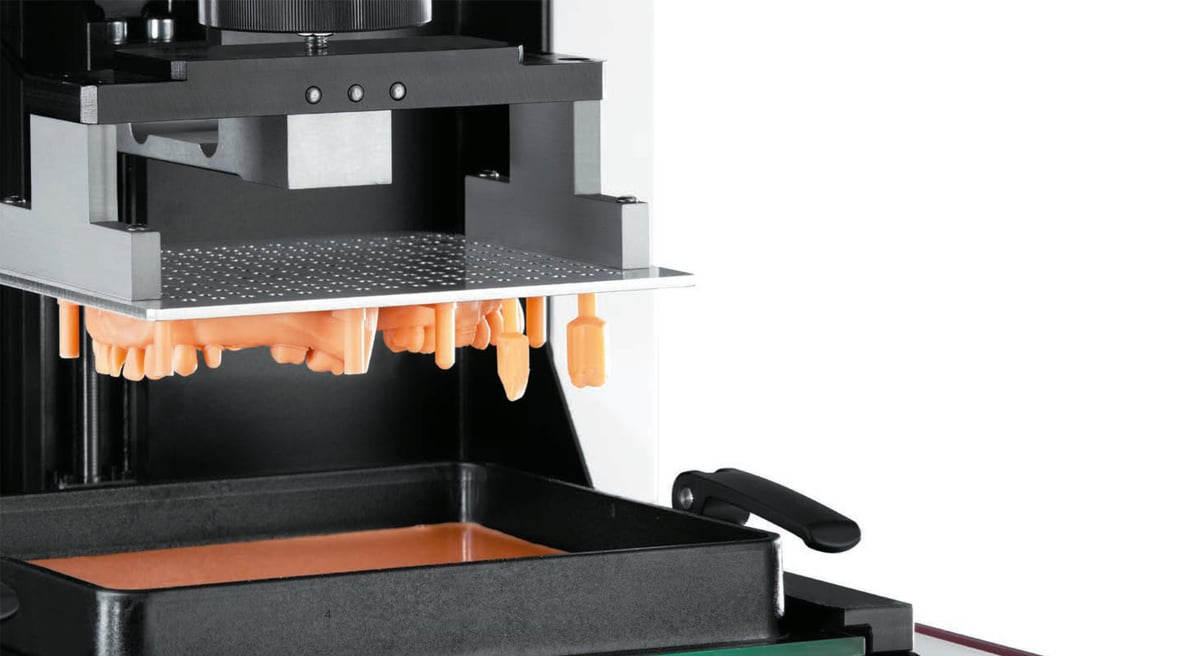3D printing with recycled plastic and recycling your plastic prints back into printing material is a growing option for manufacturers and even hobbyists looking for more sustainable processes and less waste. Today, you’ll find 3D printing filament made from discarded fishing nets or post-consumer packaging. But for resin 3D printing, also known as vat polymerization, which uses a liquid photopolymer, once that material is solidified, there’s no going back. Or is there?
Research published this week in Chemical Engineering Journal reports a new recyclable and reprintable biobased photopolymer for 3D printing.
A test part 3D printed using this castor oil-based photopolymer was evaluated for a range of mechanical properties. Then the part was melted down and reused to print another part.
“Remarkably, … important properties like color, viscosity, volumetric shrinkage, tensile strength, Tg, polymerization rate, and penetration depth of the recycled resins were almost the same as the original resin,” according to researchers Guoqiang Zhu et al., at one of China’s National Engineering Research Centers.

The type of resin printing technology used in the study, digital light processing (DLP), is widely used for applications from jewelry mold making to dental models to product prototypes. Typical liquid resins have excellent mechanical properties and outstanding durability. However, these materials are derived from nonrenewable resources, are very difficult to recycle, and don’t degrade at the end of their life. This is not only an environmental issue but one that hinders the adoption of DLP technology.
Although some progress has been made in reforming printed 3D resin parts into new shapes and recycling unwanted printed parts for other applications, “these materials are not true recyclable 3D printing materials because they can’t be reprinted by the same printer,” the Chinese researchers say. “Reversible solid-liquid transition of the printed materials is a vital prerequisite for a true recyclable printing.”
The new caster oil resin can be completely melted by heating to 90º C for 4 hours or 100º C for two hours without any catalysts or solvents, the researchers found. Then, without adding virgin resin, used to print new objects.
Although not applicable to every resin 3D printing situation, the amount of material that could be reclaimed from printed molds, prototypes, support structures, and models and reused to print new parts is vast. For example, Zhu et al. 3D printed sacrificial molds to cast complicated objects and found the molds can be recycled and reprinted for new sacrificial molds. “To the best of our knowledge, (these are) the first reprintable sacrificial molds.”
When will consumers be able to buy a liter of re-printable resin? Certainly, not in the near future, but work being done in this area is promising.
“In general, this work can not only realize the high-value utilization of DLP printing materials,” according to Zhu et al., “but also greatly alleviate environmental pollution accompanying … the rapidly growing 3D printing industry.”
Lead image source: Carbon is a maker of industry-leading DLP resin 3D printers, but it currently doesn't offer a reprintable resin.
License: The text of "3D Printing with Recycled Resin" by All3DP Pro is licensed under a Creative Commons Attribution 4.0 International License.

